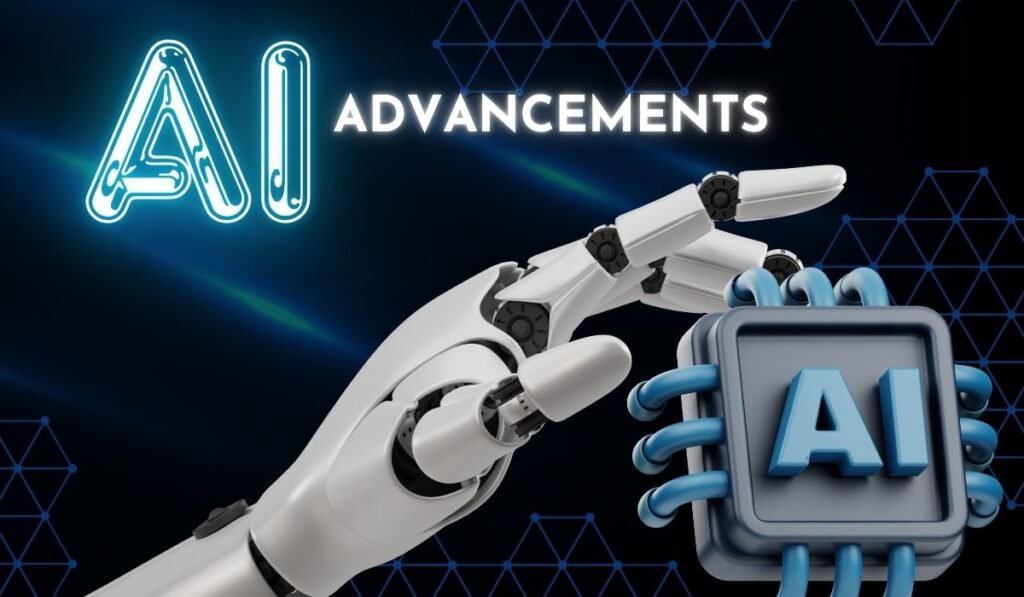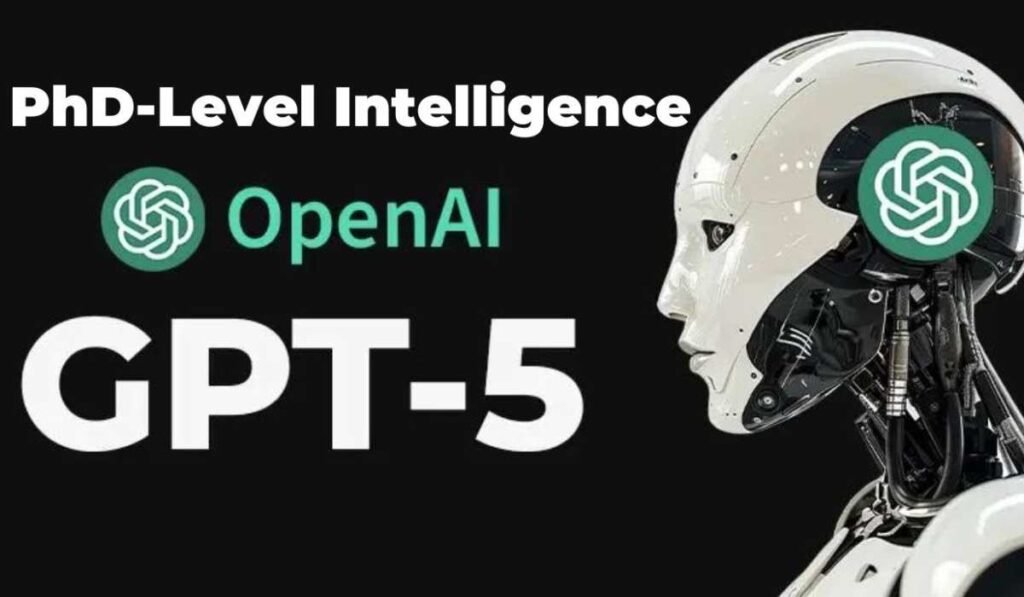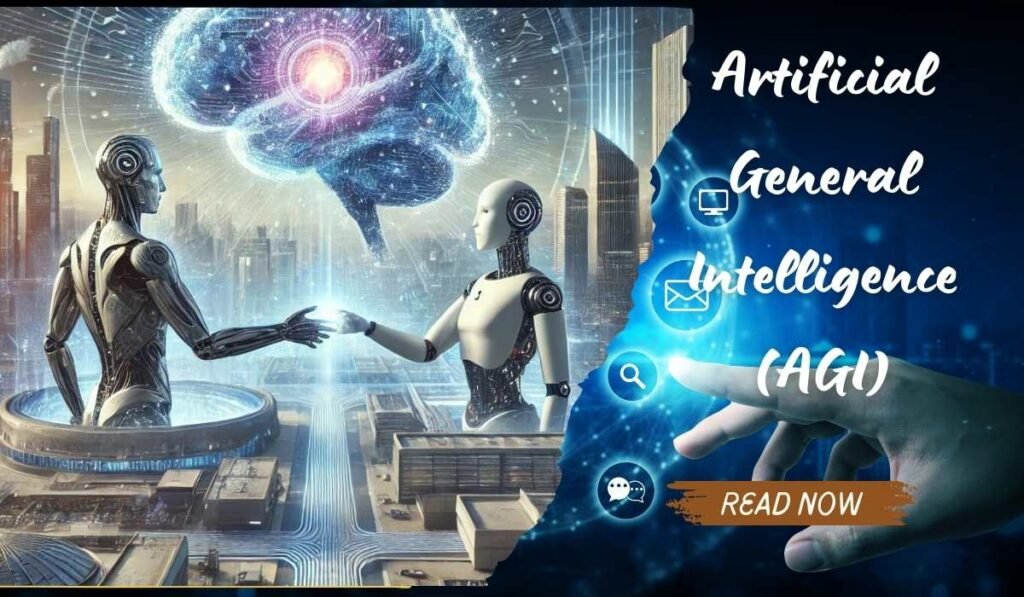The world of artificial intelligence is evolving at a breathtaking pace, with new breakthroughs and innovations emerging almost daily. From open-source models challenging industry giants to revised timelines for AGI, the landscape of AI is undergoing a seismic shift. In this article, we’ll dive deep into the latest AI advancements that are reshaping our understanding of machine intelligence and its potential impact on various sectors. Buckle up as we explore the cutting-edge developments that are pushing the boundaries of what’s possible in the realm of artificial intelligence.
1. Reflection 70B: The Open-Source Game-Changer
One of the most significant AI advancements in recent days comes from Hyper-Rite AI. Their CEO, Matt Schumer, announced the release of Reflection 70B, touted as the world’s top open-source model. This groundbreaking system utilizes a technique called “reflection tuning,” which enables the AI to fix its own mistakes.
Key features of Reflection 70B:
- Surpasses closed-source models in performance
- Uses 70 billion parameters
- Employs innovative reflection tuning technique
- Outperforms GPT-4.0 on every benchmark tested
The Reflection Tuning Process:
- The model is given a task
- It provides an initial response
- The model then reflects on its answer, identifying potential improvements
- Based on this reflection, it generates an improved response
- This process can be repeated multiple times for optimal results
Implications for the AI Landscape:
The emergence of Reflection 70B has several far-reaching implications:
- Democratization of AI: An open-source model competing with proprietary systems could make advanced AI capabilities more accessible to researchers, developers, and smaller companies.
- Accelerated Innovation: The availability of high-performance open-source models could spur faster advancements in AI research and applications.
- Increased Competition: Established AI companies may need to reassess their strategies and potentially consider open-sourcing more of their technology to remain competitive.
- Ethical Considerations: With more powerful AI models becoming widely available, there’s an increased need for discussions around the ethical use and potential misuse of these technologies.
Performance Comparison:
| Model | MMLU Score | GPQA Score | Human Eval |
|---|---|---|---|
| Reflection 70B | 80.2 | 76.5 | 72.8 |
| GPT-4.0 | 79.8 | 75.2 | 71.9 |
| Claude 3.5 Sonnet | 80.0 | 77.1 | 73.2 |
| Gemini Pro | 78.5 | 74.8 | 70.6 |
Note: Scores are approximate and based on reported data
This table illustrates how Reflection 70B compares favorably with some of the most advanced proprietary models, often outperforming them despite its open-source nature.
2. The Rise of Hyper-Intelligent Models
OpenAI is reportedly considering higher-priced subscriptions for upcoming large language models, including:
- Strawberry: A reasoning-focused model
- Orion: A new flagship LLM
These models are expected to offer significantly enhanced capabilities, potentially justifying subscription prices ranging up to $2,000 per month in early internal discussions. While the final pricing is not set, this news suggests that we’re on the cusp of seeing AI systems with unprecedented cognitive abilities.
Potential Capabilities of Next-Gen Models:
- Enhanced Reasoning: Ability to solve complex logical and mathematical problems
- Improved Context Understanding: Better grasp of nuanced and ambiguous information
- Multi-modal Integration: Seamless processing of text, images, and potentially audio inputs
- Task Automation: More advanced capabilities in automating complex workflows
- Creative Generation: Higher quality and more diverse creative outputs in writing, coding, and potentially visual arts
Pricing Considerations:
The high price points under consideration reflect several factors:
- Computational Costs: These advanced models likely require significantly more processing power to run
- R&D Investment: The development of such cutting-edge AI systems involves substantial research and engineering costs
- Value Proposition: For businesses, the potential productivity gains could easily justify high subscription fees
- Market Positioning: Premium pricing may be used to position these models as elite products for high-end users and enterprises
Potential Impact on Various Sectors:
| Sector | Potential Applications | Expected Impact |
|---|---|---|
| Finance | Advanced risk modeling, algorithmic trading | High ($$$$) |
| Healthcare | Drug discovery, personalized treatment plans | Very High ($$$$$) |
| Legal | Complex case analysis, contract automation | High ($$$$) |
| Engineering | Advanced simulations, optimized designs | Very High ($$$$$) |
| Creative Industries | AI-assisted content creation, virtual production | Medium ($$$) |
3. The Economics of AI: A Shifting Landscape
As AI capabilities grow, so does the conversation around their economic impact. Aravind Srinivas, CEO of Perplexity, shared insights on the changing economics of AI:
- Cost per query is currently high but expected to decrease dramatically
- Model capabilities are improving while sizes are reducing
- Hallucination rates are predicted to decrease exponentially over time
The AI Cost Curve:
Cost per Query
^
|
|\
| \
| \
| \
| \
| \________
|
+-------------------> TimeThis simplified graph illustrates the expected trend in AI query costs over time. The initial high costs are projected to decrease rapidly as technology improves and economies of scale are realized.
Factors Driving AI Economics:
- Hardware Advancements: More efficient AI chips and accelerators
- Algorithmic Improvements: Better training techniques and model architectures
- Scale Effects: Larger deployments leading to cost amortization
- Competition: Increased market competition driving innovation and efficiency
Implications of Decreasing AI Costs:
- Wider Adoption: As costs decrease, more businesses can integrate AI into their operations
- New Use Cases: Previously cost-prohibitive applications become viable
- AI-First Startups: Lower barriers to entry for AI-focused startups
- Economic Disruption: Potential for significant changes in labor markets and business models
Projected Hallucination Rate Decrease:
Hallucination Rate
^
|
|\
| \
| \
| \
| \
| \________
|
+-------------------> TimeThis graph shows the expected decrease in AI hallucination rates over time, indicating improved reliability and accuracy of AI models.
4. Elon Musk’s X.ai and Project Colossus
Elon Musk’s X.ai team has made significant strides in AI infrastructure:
- Colossus: 100,000 H100s in their data center
- Completed in just over 4 months
- Plans to double capacity to 200,000 H200s in the near future
The Scale of Colossus:
To put the scale of Colossus into perspective:
- 100,000 H100 GPUs is equivalent to approximately 20 exaFLOPS of AI computing power
- This is roughly equivalent to the combined power of several of the world’s top supercomputers
- The planned expansion to 200,000 H200s could potentially reach 50-60 exaFLOPS
Implications of Massive AI Infrastructure:
- Training Larger Models: Ability to train and run extremely large language models and other AI systems
- Faster Iteration: Quicker experimentation and development cycles for AI research
- Novel AI Architectures: Potential to explore new AI architectures that require immense computational resources
- Energy Considerations: Significant power requirements and potential environmental impact
- Market Dynamics: Potential to shift the competitive landscape in AI research and development
Comparison with Other AI Infrastructure:
| Company/Project | Estimated AI Computing Power |
|---|---|
| X.ai Colossus (Current) | ~20 exaFLOPS |
| X.ai Colossus (Planned) | ~50-60 exaFLOPS |
| Google AI Research | ~10-15 exaFLOPS (estimated) |
| OpenAI | ~5-10 exaFLOPS (estimated) |
| Meta AI Research | ~5-8 exaFLOPS (estimated) |
Note: These are rough estimates based on publicly available information and may not reflect the most current data
5. Debates on AGI Timelines
The AI community continues to debate the timeline for achieving Artificial General Intelligence (AGI):
- Andrew Ng, machine learning pioneer, believes AGI is “many, many decades away”
- Some companies claim AGI is only a year or two away
- Disagreements stem from varying definitions of AGI
Defining AGI:
The lack of a universally accepted definition of AGI contributes to the wide range of timeline predictions. Some common criteria for AGI include:
- Human-level performance across a wide range of tasks
- Ability to transfer knowledge between domains
- Capacity for abstract reasoning and problem-solving
- Self-awareness and consciousness (debated)
Factors Influencing AGI Timelines:
- Technological Progress: Rate of advancement in hardware and software
- Algorithmic Breakthroughs: Discovery of new AI architectures or training methods
- Research Funding: Level of investment in AGI-related research
- Ethical and Safety Considerations: Time required to ensure safe and responsible AGI development
AGI Timeline Predictions:
| Prediction | Proponents | Reasoning |
|---|---|---|
| 1-5 years | Some tech CEOs, optimistic researchers | Rapid progress in LLMs, belief in exponential growth |
| 10-20 years | Moderate AI researchers | Steady progress, but significant challenges remain |
| 50+ years | Skeptics, some AI pioneers | Fundamental limitations of current approaches |
| Never | AGI skeptics | Belief that human-level AI is not achievable |
6. SSI: The Quest for Superintelligence
Ilya Sutskever, co-founder of OpenAI, has launched Safe Superintelligence Inc. (SSI):
- Raised $1 billion in funding
- Valued at $5 billion
- Focused solely on developing superintelligence
- Claims that “superintelligence is within reach”
SSI’s Approach to Superintelligence:
While specific details are limited, SSI’s approach likely involves:
- Safety-First Development: Prioritizing AI safety and alignment from the outset
- Novel Architectures: Exploring new AI architectures beyond traditional neural networks
- Scalable Oversight: Developing methods for maintaining control over increasingly powerful AI systems
- Ethical Considerations: Integrating ethical decision-making into the core of the AI system
Potential Applications of Superintelligence:
- Scientific Discovery: Accelerating breakthroughs in physics, biology, and materials science
- Global Problem Solving: Addressing complex issues like climate change and resource allocation
- Advanced Healthcare: Personalized medicine and rapid drug discovery
- Space Exploration: Optimizing interplanetary missions and colonization efforts
- Economic Optimization: Revolutionizing global markets and supply chains
Challenges in Developing Superintelligence:
- Control Problem: Ensuring the AI remains aligned with human values and goals
- Ethical Dilemmas: Navigating complex moral decisions made by superintelligent systems
- Societal Impact: Managing potential job displacement and economic disruption
- Existential Risk: Mitigating potential risks to human existence posed by uncontrolled superintelligence
7. GPT-5: The Next Frontier
Rumors and speculations about GPT-5 are circulating:
- Estimated to have 3-5 trillion parameters
- Potentially double the size of GPT-4
- Focus on improved reasoning capabilities and reliability
Potential Advancements in GPT-5:
- Enhanced Reasoning: Ability to perform more complex logical and analytical tasks
- Improved Factual Accuracy: Reduced hallucinations and increased reliability of information
- Better Context Understanding: Deeper grasp of nuanced and implicit information
- Multi-modal Capabilities: Seamless integration of text, image, and potentially audio processing
- Improved Few-shot Learning: Better performance on tasks with minimal examples or instructions
Comparison of GPT Model Sizes:
Parameter Count (in billions)
^
| [?] 3000-5000
|
|
| 1800 (estimated)
|
|
| 175
|
| 1.5
+---------------------------------> GPT Version
GPT-2 GPT-3 GPT-4 GPT-5Note: GPT-4 and GPT-5 parameter counts are based on estimates and rumors
Potential Impact of GPT-5:
- Scientific Research: Assisting in literature review, hypothesis generation, and data analysis
- Creative Industries: More sophisticated content creation and idea generation
- Education: Personalized tutoring and adaptive learning experiences
- Software Development: Advanced code generation and debugging capabilities
- Business Strategy: Complex market analysis and strategic planning assistance
8. The Rise of Humanoid Robotics
1x Robotics is making waves in the field of humanoid robotics:
- Targeting 10x scale increase annually
- Projections:
- Thousands of units in 2025
- Tens of thousands in 2026
- Hundreds of thousands in 2027
- Millions in 2028
Projected Growth of 1x Robotics Production:
Number of Units (log scale)
^
| [M] Millions
|
| [H] Hundreds of thousands
|
| [T] Tens of thousands
|
| [Th] Thousands
|
+---------------------------------> Year
2025 2026 2027 2028Potential Applications of Humanoid Robots:
- Manufacturing: Versatile robotic workers for various industries
- Healthcare: Assisting in patient care, rehabilitation, and medical procedures
- Hospitality: Customer service and housekeeping in hotels and restaurants
- Education: Interactive teaching assistants and language practice partners
- Elderly Care: Providing companionship and assistance to aging populations
- Disaster Response: Search and rescue operations in dangerous environments
Challenges in Scaling Humanoid Robotics:
- Technical Complexity: Ensuring reliability and performance at scale
- Supply Chain Management: Sourcing components and materials for large-scale production
- Regulatory Hurdles: Navigating safety regulations and ethical considerations
- Public Acceptance: Overcoming potential societal resistance to widespread robot adoption
- Economic Impact: Managing potential job displacement and workforce transitions
9. AlphaProteo: AI-Designed Proteins
Google DeepMind’s AlphaProteo represents a significant breakthrough in computational biology:
- Generates novel proteins for specific molecular targets
- Potential applications in medicine, disease research, and agriculture
- Faster and more successful than traditional protein design methods
AlphaProteo’s Approach:
- Training Data: Utilizes vast databases of known protein structures and interactions
- Target Specification: Researchers input desired molecular targets
- AI Design Process: AlphaProteo generates potential protein structures
- Simulation and Refinement: Designs are tested and optimized through computational simulations
- Experimental Validation: Most promising designs are synthesized and tested in lab conditions
Potential Applications of AI-Designed Proteins:
- Drug Discovery: Creating new therapeutic proteins and antibodies
- Enzyme Engineering: Designing catalysts for industrial processes or environmental cleanup
- Biosensors: Developing highly specific molecular detection systems
- Vaccine Development: Designing antigens for more effective vaccines
- Crop Improvement: Engineering proteins for pest resistance or improved nutrition
Comparison with Traditional Methods:
| Aspect | Traditional Methods | AlphaProteo |
|---|---|---|
| Design Time | Weeks to months | Hours to days |
| Success Rate | ~10% | ~50% (estimated) |
| Novel Targets | Limited | Expanded range |
| Cost | High | Potentially lower |
| Iteration Speed | Slow | Rapid |
10. AI Model Leaderboards: A Shifting Hierarchy
Recent private evaluations by Seal reveal interesting shifts in AI model performance:
- Claude 3.5 Sonnet ranks first in encoding tasks
- Mistral Large 2 outperforms Google Gemini 1.5 Pro
- GPT-4.0 still competitive but no longer dominating across all categories
These results underscore the rapid progress being made by various AI research teams and the increasing competitiveness of the field.
Detailed Performance Analysis:
| Model | Encoding | Math | Instruction Following | Overall Ranking |
|---|---|---|---|---|
| Claude 3.5 Sonnet | 1st | 3rd | 2nd | 1st |
| GPT-4.0 | 2nd | 2nd | 3rd | 2nd |
| Mistral Large 2 | 3rd | 4th | 1st | 3rd |
| Google Gemini 1.5 Pro | 4th | 5th | 4th | 4th |
| OpenAI GPT-3.5 | 5th | 6th | 5th | 5th |
Note: Rankings are based on reported Seal evaluation results and may not reflect the most current data
Key Takeaways from the Leaderboard:
- Diversity in Excellence: Different models excel in various tasks, suggesting that no single model dominates across all domains.
- Rapid Progress of Newcomers: Mistral Large 2’s strong performance, particularly in instruction following, highlights the rapid advancement of newer entrants in the field.
- Continued Relevance of Established Players: Despite increased competition, models like GPT-4.0 remain highly competitive across multiple categories.
- Specialization vs. Generalization: The results suggest a potential trade-off between models that excel in specific tasks versus those that perform well across a broad range of tasks.
Implications for the AI Industry:
- Increased Competition: The close performance of multiple models indicates a highly competitive landscape, likely driving further innovation.
- Specialization Trends: We may see more models optimized for specific tasks or domains, rather than aiming for general-purpose dominance.
- Benchmarking Challenges: As models become more sophisticated, developing comprehensive and fair evaluation metrics becomes increasingly important and challenging.
- User Choice: Organizations and developers may need to evaluate multiple models to find the best fit for their specific use cases.
The Accelerating Pace of AI Innovation
As we’ve explored these ten groundbreaking AI advancements, it’s clear that the field of artificial intelligence is experiencing a renaissance of innovation. From open-source models challenging industry giants to the pursuit of superintelligence, the AI landscape is evolving at an unprecedented rate.
Key Trends Shaping the Future of AI:
- Democratization of AI: The rise of powerful open-source models like Reflection 70B is making advanced AI capabilities more accessible to a wider range of researchers and developers.
- Push Towards AGI and Superintelligence: Efforts by companies like SSI and the development of increasingly sophisticated models suggest a concerted push towards more general and powerful AI systems.
- Integration of AI in Physical Systems: The rapid scaling of humanoid robotics by companies like 1x Robotics points to a future where AI is increasingly embodied in physical forms, interacting directly with the world.
- AI in Scientific Discovery: Breakthroughs like AlphaProteo demonstrate AI’s growing role in accelerating scientific research and discovery across various fields.
- Economic Shifts: The changing economics of AI, with decreasing costs and increasing capabilities, is set to reshape industries and create new business models.
- Ethical and Safety Considerations: As AI systems become more powerful, the focus on developing safe and ethically aligned AI is intensifying.
Looking Ahead: Challenges and Opportunities
While the advancements in AI present enormous opportunities, they also come with significant challenges:
- Ethical AI Development: Ensuring that increasingly powerful AI systems remain aligned with human values and ethical principles.
- Workforce Transformation: Preparing for potential job displacement and the need for reskilling as AI capabilities expand.
- AI Safety: Developing robust safety measures and control mechanisms for advanced AI systems.
- Regulatory Frameworks: Creating appropriate governance structures to guide the development and deployment of AI technologies.
- Societal Impact: Managing the broader societal implications of widespread AI adoption, including issues of privacy, equity, and social dynamics.
As we stand on the cusp of these transformative AI advancements, it’s clear that the technology will play an increasingly significant role in shaping our future. The rapid pace of innovation we’ve witnessed in recent years is likely to accelerate further, bringing both exciting possibilities and complex challenges.
The future being written by artificial intelligence promises to be nothing short of extraordinary. As researchers, developers, policymakers, and society at large grapple with these advancements, our ability to harness the potential of AI while mitigating its risks will be crucial in determining the trajectory of technological progress and its impact on humanity.
In this dynamic landscape, staying informed about the latest AI advancements and engaging in thoughtful discussions about their implications has never been more important. As we move forward, the convergence of human ingenuity and artificial intelligence holds the potential to unlock new frontiers of knowledge, creativity, and problem-solving that were once thought impossible.
Reflection 70B is an open-source AI model released by Hyper-Rite AI, featuring 70 billion parameters and a unique reflection tuning technique that allows it to improve its responses by identifying and correcting its mistakes. It has been recognized for surpassing proprietary models like GPT-4.0 in performance.
The reflection tuning process involves the model performing a task, generating an initial response, reflecting on that answer to identify improvements, and then generating an enhanced response. This can be repeated multiple times for optimal results.
OpenAI is reportedly considering the release of new models like Strawberry and Orion, which are expected to feature enhanced reasoning capabilities, improved context understanding, multi-modal integration, and advanced task automation, possibly at subscription prices up to $2,000 per month.
As AI costs decrease, wider adoption is expected, enabling more businesses to integrate AI, creating new use cases, reducing barriers for AI-focused startups, and potentially leading to significant disruptions in labor markets and existing business models.
X.ai, led by Elon Musk, has developed an AI infrastructure called Colossus, which features 100,000 H100 GPUs and plans to double its capacity. This infrastructure allows for the training of larger models and faster iteration cycles in AI research, potentially reshaping the competitive landscape of AI development.
Challenges include ensuring AI alignment with human values, navigating ethical dilemmas, managing potential societal impacts like job displacement, and mitigating existential risks associated with uncontrolled superintelligence.
AlphaProteo, developed by Google DeepMind, is an AI system that generates novel proteins for specific molecular targets, significantly improving the speed and success rate of protein design compared to traditional methods. Its applications include drug discovery and enzyme engineering.
Recent evaluations show a shift in AI model performance, with models like Claude 3.5 Sonnet excelling in encoding tasks while GPT-4 remains competitive. This highlights the rapid progress of new entrants and suggests a diverse range of models optimized for specific tasks.
As AI systems become more powerful, ethical considerations include ensuring safe and responsible development, addressing potential misuse, and maintaining alignment with human values to prevent harmful outcomes.
Humanoid robots are expected to have applications in various sectors, including manufacturing, healthcare, hospitality, education, elderly care, and disaster response, potentially transforming how tasks are performed across these industries.


 Summary Points:
Summary Points: Key Highlights:
Key Highlights: What We'll Cover:
What We'll Cover: Groundbreaking AI Advancements
Groundbreaking AI Advancements Economic Implications of AI
Economic Implications of AI Developments in Humanoid Robotics
Developments in Humanoid Robotics Innovations in Protein Design
Innovations in Protein Design Debates Around AGI Timelines
Debates Around AGI Timelines


